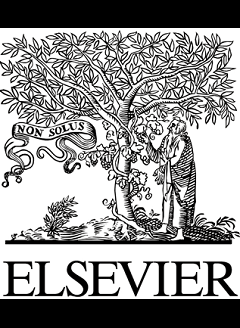دانلود رایگان مقاله چارچوبی برای اثربخشی تبلیغات در فیس بوک – سال 2020


مشخصات مقاله:
عنوان فارسی مقاله:
چارچوبی برای اثربخشی تبلیغات در فیس بوک: یک دیدگاه رفتاری
عنوان انگلیسی مقاله:
A framework for Facebook advertising effectiveness: A behavioral perspective
کلمات کلیدی مقاله:
تبلیغات شبکه های اجتماعی، فیس بوک، نگرش های رفتار، اخلاق
کلمات کلیدی انگلیسی:
Social network advertising – Facebook – Attitudes – Behavior
مناسب برای رشته های دانشگاهی زیر:
مدیریت
مناسب برای گرایش های دانشگاهی زیر:
بازاریابی
وضعیت مقاله انگلیسی و ترجمه:
مقاله انگلیسی را میتوانید به صورت رایگان با فرمت PDF با کلیک بر روی دکمه آبی، دانلود نمایید. برای ثبت سفارش ترجمه نیز روی دکلمه قرمز رنگ کلیک نمایید. سفارش ترجمه نیازمند زمان بوده و ترجمه این مقاله آماده نمیباشد و پس از اتمام ترجمه، فایل ورد تایپ شده قابل دانلود خواهد بود.
فهرست مطالب:
Abstract
Keywords
1. Introduction
2. Literature review
2.1. Privacy concerns, control, and trust
2.2. Advertising intrusiveness
2.3. General advertising attitudes
2.4. Advertising value
2.5. Attitudes and behavior toward Facebook advertising
3. Research method
4. Results
4.1. Descriptive results
4.2. Measurement model
4.3. Reliability and validity
4.4. Invariance test
4.5. Structural model
4.6. Hypothesis results
5. Discussion and conclusions
6. Limitation and future research
Acknowledgments
Funding
References
قسمتی از مقاله انگلیسی:
1. Introduction
Approximately a third of the world’s population used a social network at least once a month in 2017 (eMarketer, 2017). Facebook alone had 2.23 billion monthly users as of 2018 (Statistica, 2018). Thus, it is reasonable to infer that Facebook is the world’s foremost social network service (SNS) and a tool that has become an integrated part of consumers’ lives. The growth in social network use is evident not only in developed countries but also, in fact even more so, in developing countries (Internet World Stats Report, 2017). Social media offer numerous marketing opportunities (Fink, Koller, Gartner, Floh, & Harms, 2019). Social media advertising is one such opportunity that is becoming an increasingly attractive way of enhancing advertising effectiveness (Lee & Hong, 2016; Shen, Chioub, Hsiao, Wanga, & Li, 2016). SNSs present opportunities for brands to advertise in a more targeted and personalized manner. Unsurprisingly, therefore, brands are allocating more and more of their advertising expenditure to social media (Knoll, 2016; Okazaki & Taylors, 2013). To leverage this new means of advertising, advertisers and brands must understand what leads social media users to engage in positive behavior toward brands and toward their marketing messages. Traditional website advertisements are mostly delivered through banner ads, or sponsored links, that are clearly identified as marketing communication messages. However, Facebook advertising differs from traditional website advertisement because Facebook ads are often indistinguishable from user content. Most Facebook ads are designed to resemble a typical post, making it difficult for Facebook users to differentiate between advertising and other types of user-generated content (Sanne & Wiese, 2018; Taylor, Lewin, & Strutton, 2011). Nielsen (2010) differentiates between two principal types of social network advertisements (SNAs): “homepage ads”, which have a social context; and ‘organic impressions’, that appear on friends’ newsfeeds as “stories” in reference to the brands with which friends engage.


